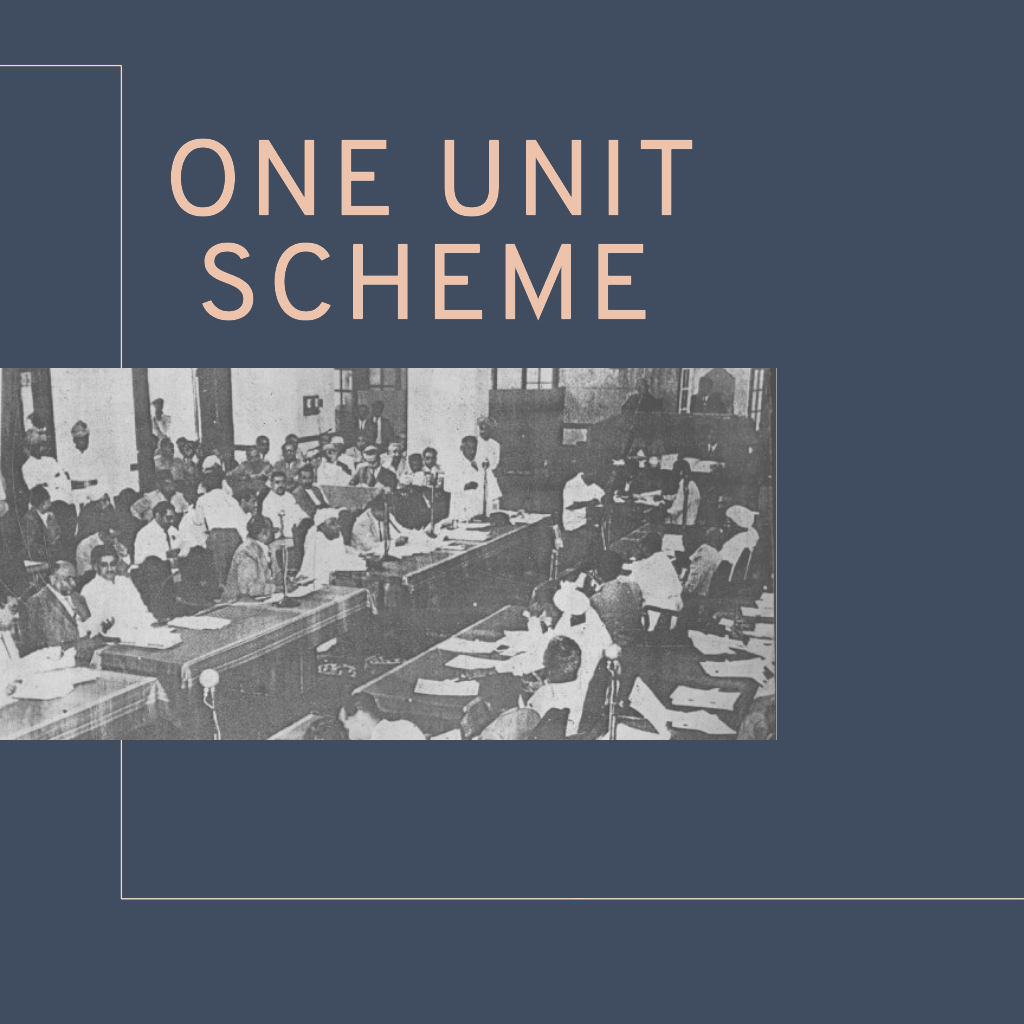Introduction
The mid-1950s marked a critical juncture in Pakistan’s history—a time when the nation grappled with administrative challenges, regional disparities, and the delicate balance between unity and diversity. At the heart of this transformation stood the One Unit Scheme, a policy that sought to unify the provinces of West Pakistan into a single administrative entity.
Background
The One Unit Scheme was initiated on November 22nd,1954, and officially passed on September 30th, 1955. Prime Minister Muhammad Ali Bogra led this reorganization effort. The central Pakistani government aimed to address the administrative challenges posed by the two unequal wings of Pakistan: West Pakistan (comprising Punjab, Sindh, NWFP, and Baluchistan) and East Pakistan (now Bangladesh).
Key Features of One Unit Scheme of Pakistan
- Integration of Provinces:
The One Unit program merged the four provinces of West Pakistan (West Punjab, Sindh, NWFP, and Baluchistan) into a single province. This move aimed to parallel the administrative structure of East Pakistan.
- Resistance and Controversy:
The program faced significant resistance from the four provinces since its inception. Scholar Julien Levesque suggests that the One Unit project was primarily driven by the elite in West Pakistan, aiming to prevent politicians from East Pakistan from gaining power at the center. The National Awami Party sponsored a bill in the National Assembly calling for the dissolution of the One Unit and advocating for regional autonomy.
- Duration and Dissolution:
The One Unit program remained in effect until 1970. President General Yahya Khan eventually imposed Legal Framework Order No. 1970, ending the One Unit program and reinstating the provisional status of the four provinces as of August 1947.
Impact and Legacy of One Unit Scheme
- Internal Challenges:
The One Unit created internal problems within West Pakistan, as it neither resolved the disparity with East Pakistan nor addressed other pressing issues.
- Political Turmoil:
The program’s controversial nature contributed to political instability and tensions.
- Historical Significance:
The One Unit Scheme remains a pivotal chapter in Pakistan’s history, reflecting the complexities of balancing regional interests and national unity.
Conclusion
The One Unit Scheme, despite its short-lived existence, left an indelible mark on Pakistan’s trajectory. It taught us that unity cannot be imposed solely through administrative reorganization; it must emerge organically from shared values, respect for diversity, and equitable representation. As we reflect on this historical episode, let us recognize the complexities of nation-building and strive for unity that transcends mere administrative boundaries. The One Unit era serves as a reminder that true cohesion lies not in uniformity, but in celebrating our rich tapestry of cultures, languages, and histories.

